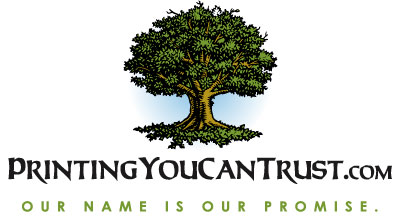Brochures and Your Business
Why You Need a Brochure
According to marketing expert Julie Hyde, "If you want to look like you mean business, you need a brochure." Gone are the days when a business card and a handshake was enough to instill our confidence in someone offering services. Now we want proof of their livelihood, pictures of what they can do or what they have to sell, and we want to take it home and read it in private.
A brochure also ensures that you will connect with more genuinely interested people. Directing someone to a Website does not mean they are going to go there anytime soon, or ever. And your business card doesn't tell them anything about upcoming sales or special offers. Brochures save time for your prospective customers by letting them access the information they want more easily, and they save you time by explaining the basics of what you have to offer.
Designing a brochure is not easy, and its not something everyone can do. Coming up with a great brochure proves you've got it together, and shows that you have resources.
Tips on Creating Your Brochure
--Think of your audience- People like brochures because they answer some of their important questions without further research on their part. Think of questions a customer might have about your products or services and come up with answers. Putting the answers in a bulleted format or exploring them in different sections, will help the reader feel like he is getting something out of the brochure.
--Create Visual Interest- Don't make it a mystery. Put more than just your logo or an extreme close-up of some unidentifiable product on the cover. Lure the reader inside with a great product photo or the promise of a sale.
--Use effective descriptions- Describe the Features, Attributes, and Benefits of each product or service (known as "FAB" in sales). Don't just say what it is, but also say what it does, and why it is special. Don't describe your product in model numbers or technical terms -- if you go into that much detail the reader will think they've picked up an instruction manual, not a brochure.
--Include something they'll want to keep - Depending on what you are selling, there are many opportunities to include information in the brochure that the customer might save for later use (and therefore save your brochure). A checklist on preparing a home for your flooring products, a guide to feeling younger to go with your spa products, a map of the region where your resort is located, ideas for a craft project using your art products, or a list of online resources for more information (including your website!) are all good options.
-- Don't get caught up in all the bells and whistles - As you'll see below, the best brochure does not have to be the one with the most colors, finishes, or the fanciest die cut shape. Keep it simple and appealing. A few great photos and some well chosen words can go a long way over sales talk, star bursts, and bright colors everywhere.
Getting Your Brochure Printed
Now that you've developed a beautiful piece with a strong message (of course!) you need to get it printed. Some things to consider when printing your brochure:
Folding: Brochures can be folded in several ways, and the fold sometimes depends on how you've built your design. Three common folds are a half-fold, a gate fold (or tri-fold), and a Z-fold.



Paper Stock: Consider how heavy you want the paper to feel, if you want it to be able to lay flat, to keep its folds or even stand up. Compare different paper widths, i.e. magazine pages, magazine covers, business cards, and see which feels right. Try folding it and see how that feels too. Consider your audience, and the possibilities of colored papers, natural papers, and recycled papers.
Coatings: The most common coating is called an aqueous coating, and that's what makes things like brochures and magazines look shiny. High quality coatings are also available such as UV coating and high gloss. For the coating consider your audience and your message -- are you a non-profit organization or a resort hotel? The former might want no coating at all, for a more natural look, and the latter might want the glossiest product possible. If you are raising money, you don't want to look like you are spending too much of it on your literature! But if you are a high-end business, you may want your brochure to simply drip with quality.
3 Looks:

A National Park Brochure on plain white bond paper.
No one will think their tax dollars are being wasted!

A Non-Profit brochure on medium weight stock, no special finishes, only 2 colors used.
Looks extremely classy and professional without looking spendy.

A resort brochure with glossy coating, 4 color process printing, all the extras.
Assures the reader they'll get the best of everything!


